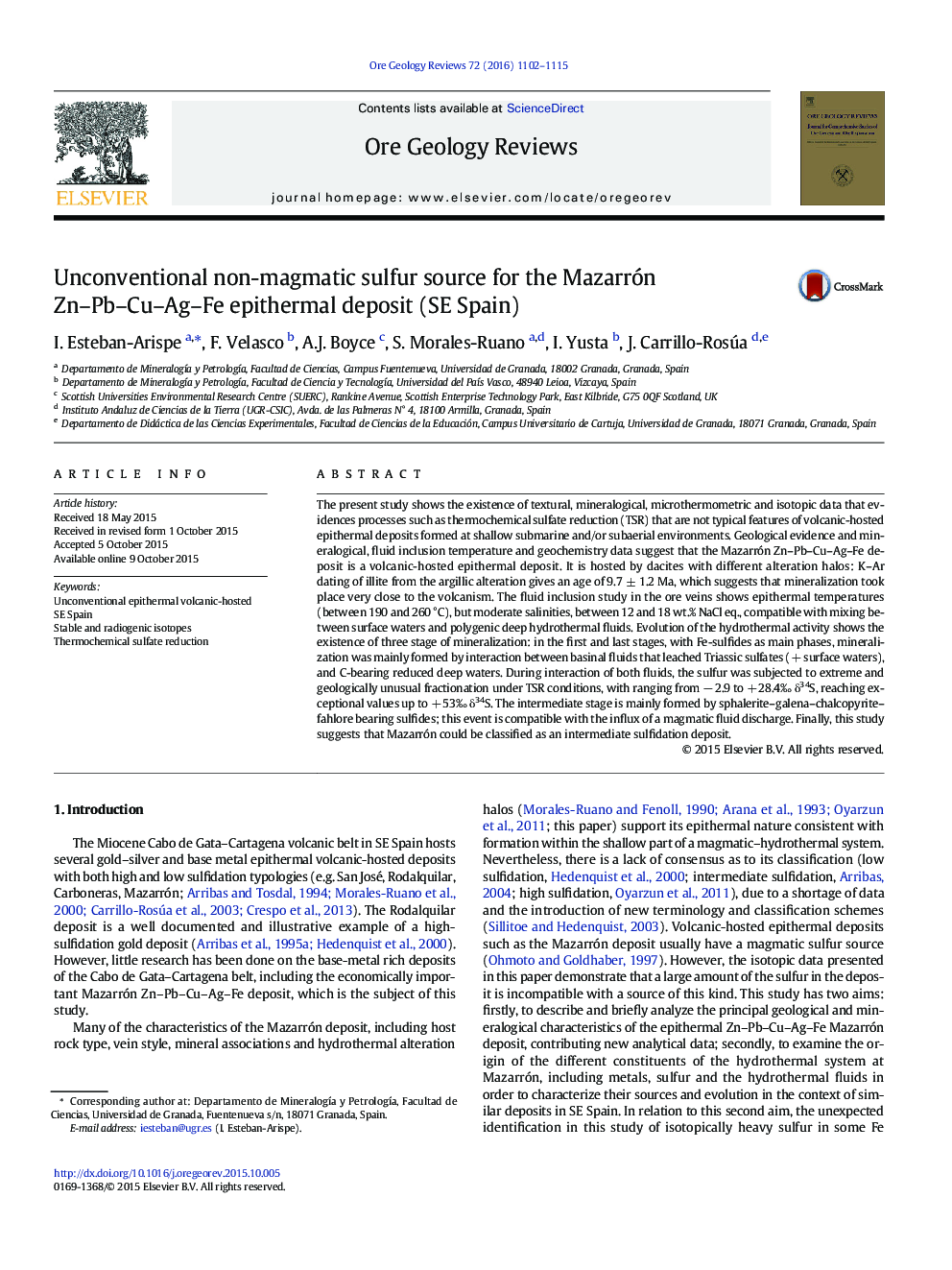| Article ID | Journal | Published Year | Pages | File Type |
|---|---|---|---|---|
| 6435836 | Ore Geology Reviews | 2016 | 14 Pages |
â¢The Mazarrón Zn-Pb-Cu-Ag-Fe deposit is a volcanic-hosted epithermal deposit (VHED).â¢Î´34Ssulfide range is very wide, between â 2.9â° to + 28.4â°, very uncommon for VHED.â¢Î´34Sbarite of + 53.9â° is among the most enriched in any VHED.â¢Sulfur from sulfides mainly originated by thermochemical sulfate reduction (TSR).â¢Basinal, marine, deep biogenic and magmatic fluids are involved in mineralization.
The present study shows the existence of textural, mineralogical, microthermometric and isotopic data that evidences processes such as thermochemical sulfate reduction (TSR) that are not typical features of volcanic-hosted epithermal deposits formed at shallow submarine and/or subaerial environments. Geological evidence and mineralogical, fluid inclusion temperature and geochemistry data suggest that the Mazarrón Zn-Pb-Cu-Ag-Fe deposit is a volcanic-hosted epithermal deposit. It is hosted by dacites with different alteration halos: K-Ar dating of illite from the argillic alteration gives an age of 9.7 ± 1.2 Ma, which suggests that mineralization took place very close to the volcanism. The fluid inclusion study in the ore veins shows epithermal temperatures (between 190 and 260 °C), but moderate salinities, between 12 and 18 wt.% NaCl eq., compatible with mixing between surface waters and polygenic deep hydrothermal fluids. Evolution of the hydrothermal activity shows the existence of three stage of mineralization: in the first and last stages, with Fe-sulfides as main phases, mineralization was mainly formed by interaction between basinal fluids that leached Triassic sulfates (+ surface waters), and C-bearing reduced deep waters. During interaction of both fluids, the sulfur was subjected to extreme and geologically unusual fractionation under TSR conditions, with ranging from â 2.9 to + 28.4Ⱐδ34S, reaching exceptional values up to + 53Ⱐδ34S. The intermediate stage is mainly formed by sphalerite-galena-chalcopyrite-fahlore bearing sulfides; this event is compatible with the influx of a magmatic fluid discharge. Finally, this study suggests that Mazarrón could be classified as an intermediate sulfidation deposit.
Graphical abstractDownload full-size image
